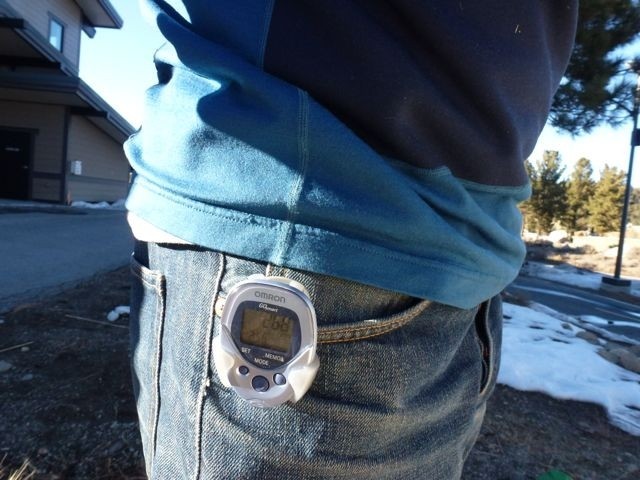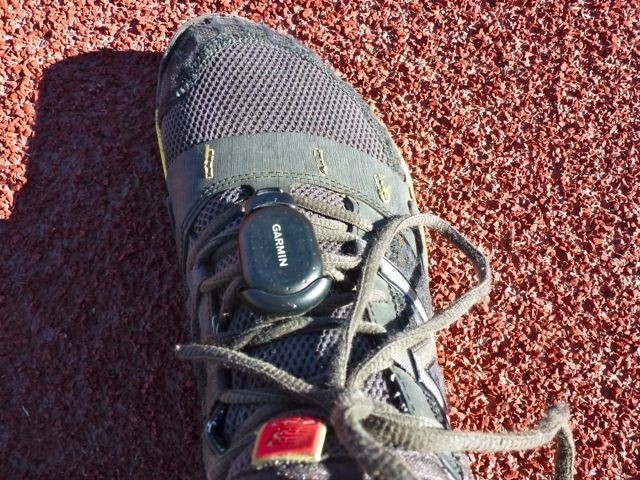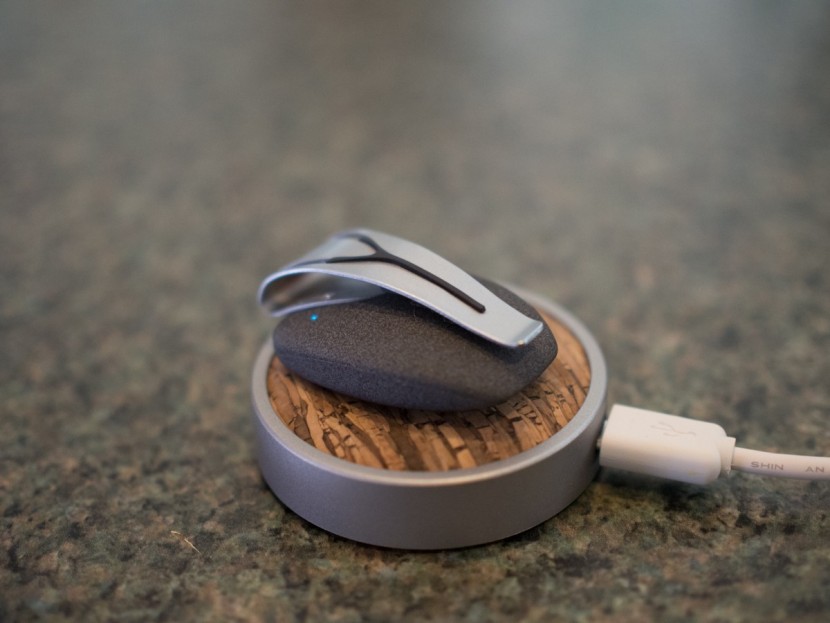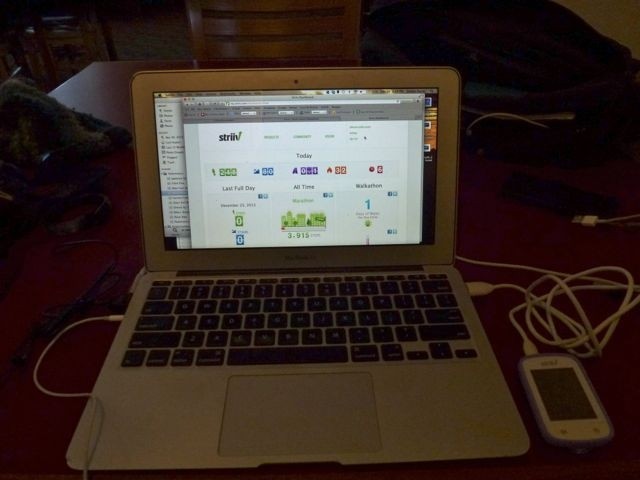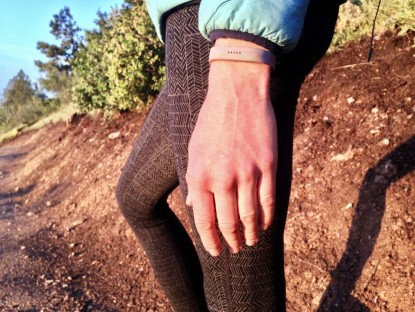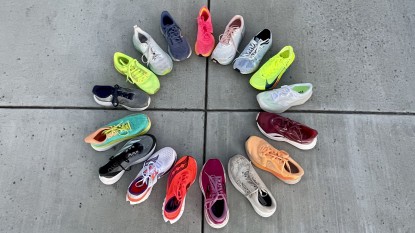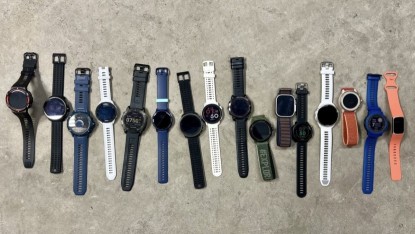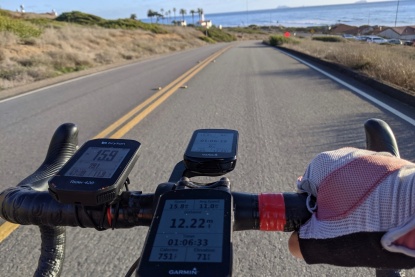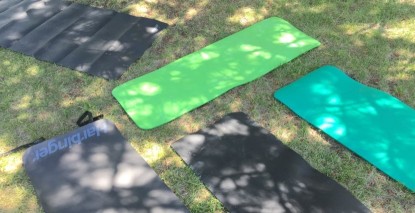How will you sort through the burgeoning and dynamic market for personal step counters? We are here to help you with that process. Our testing team selected eleven of the best pedometers on the market, evaluated them for function and value, and summarized all this in the Pedometer Review. Visit that page to come up to speed on the ins and outs of this complicated category of products. In this article, find more in-depth information on choosing a device for your specific needs.
Why a Pedometer?
Pedometers have been available and in use for many years. The initial mechanical devices tracked steps in a very rudimentary fashion. The user needed to wear them in a very specific position, and steps were counted only when the movement exactly matched a typical walking rhythm. Data management was limited and basic. In recent years, with the miniaturization and reduced cost of digital accelerometers, as well as the widespread use of smartphone processing power, and a cultural interest in maximizing the health effects of daily motion, this market has exploded. All the products in our test make use of simple and affordable accelerometer technology. An accelerometer simply senses movement. Digital processing interprets the sensed movement and generates step and activity measures.
People choose step-counting devices for one of two major reasons. By far the largest category of consumers purchases a pedometer to monitor, record, and inspire daily home and office activity. On the other hand, some select a device to record and measure formalized exercise. Here we focus on the market and products for tracking day-to-day activity. Because it is the rationale behind the vast majority of purchases, our discussion here focuses on the idea of tracking daily and routine activity. '
If you're still not sure you want a pedometer and suspect you might be interested in a bike computer, handheld GPS unity, GPS watch or even a personal locator beacon or satellite messenger, check out our overview of activity tracker types.
Types of Activity Monitors
In the daily activity monitoring capacity, most will ask their device to record every single move of every waking hour. Many will also ask their device to organize a whole host of health and lifestyle data, and do so in a manner that inspires and guides healthy choices. In order to do this, the user will need to consider portability, the motivating quality of the data and interface, user-friendliness (things like battery life and data sync style), and social media and community compatibility.
Full-Service Interactive Devices
This is the newest and most exciting category of step-counters. These devices are worn on the body, mainly employing a belt/pocket clip, and collect movement data. This movement data, whether focusing on the action of walking or the inaction of sleeping, is recorded and saved for evaluation later. In some cases, at least some of the data is shown on the device itself, while the most robust data display is done on a computer or smartphone.
Daily Step Counters
This category describes the basic pedometer. The device counts steps and may convert that step count to a distance estimate. This basic data may or may not be saved for a few days. These devices are inexpensive, simple, reliable, and suited to those that simply need the motivation to get a certain amount of activity on any given day.
Athletes' Run and Walk Trackers
Many runners wish to be tuned into their steps-per-minute count. Already many runners and fitness buffs are now tracking their outdoor speed and distance with GPS technology. To see your options in this category, consult our comprehensive GPS training watch review. When training indoors, GPS satellite signal is unavailable. To assist trainees who sometimes run or walk indoors, in order to collect information that can be compared and correlated to the GPS generated info, a few companies make foot-mounted step counters. Additionally, some of these training-specific devices can generate real-time step cadence information. In this review we did not test any athlete-specific produces.
How to Choose
How Will You Carry It?
In order to narrow the field, you must first establish how you wish to wear your device. Basically, your options for routine activity monitoring are the pocket carry or the belt-clip. One can also consider wrist-wear. Some devices can be configured in several ways. Because the instrumentation isn't super precise, and the data generated by an activity monitor is most useful in comparing one day to the next, we do not recommend changing your style of carrying regularly. If you wear your device in your pocket one day and on a belt clip the next, the two days' data may not be effectively compared.
To determine which way to carry your device, consider your wardrobe and dress code. While many of these devices are most accurate when worn on your belt or shoe, not all work and life environments are conducive to such visible electronics. It is here that we must acknowledge the fact that smartphones have accelerometers in them and there are apps that can count steps with any smartphone. This sort of tracking requires having the phone on one's body at all times. Still, anyone serious about tracking steps should use a dedicated device or be absolutely diligent about having their phone on their body at all times. Plugging your phone in to charge, or walking away from your phone defeats the purpose of a ubiquitous tracking device like a pedometer. A stand-alone device is best.
Functions
In addition to the carry style and attendant usefulness, your pedometer choice may depend on some of the various usability attributes. The list of little things that add up to important differences for many are battery life, sync style (wired or wireless), diet recording options, and subjective mood documentation. In those devices that will record user-entered data like mood and food, the same devices will also correlate that data with activity level. The simplest devices on the market use replaceable wrist-watch style batteries. The more complicated and comprehensive devices use rechargeable batteries. Of those that recharge, battery life varies from four to ten days or so.
Data Management
Next, determine for yourself how you wish to be inspired. As indicated above, an activity monitor can be just as useful in documenting steps as it is in motivating more steps. Some simply need a goal for the day and a way to track that progress. In this case, any of the simplest and least expensive devices will serve the purpose. However, many will do well with more sophisticated and lasting data management. Spend a hundred dollars or more, and you get a device that syncs with a smartphone or pc based data collection program, stores your data virtually forever, and displays it in useful and easy form.
Social Media
Lastly, consider how you may wish to integrate social pressures and motivation into your activity tracking and motivation. Does it help you get healthy to have an active peer group to compare, compete, and commiserate with? Do you have a network of friends already using one type or data platform? If all or any of those you may find inspiration with are already using a particular brand and social media platform, your choice may be made for you. This social proof factor is so significant, and all the networking devices are of such a high quality, that any other difference and distinction is not worth agonizing over. In short, if there is the slightest chance that you will find inspiration in competing with others, don't hesitate to get a device that your friends and peers are using.
The market of modern activity monitors is comprehensive, high quality, and effective. Consider the above criteria, examine our tested devices, and enjoy the journey of integrating digital inspiration and organization into your daily activity regimen.


